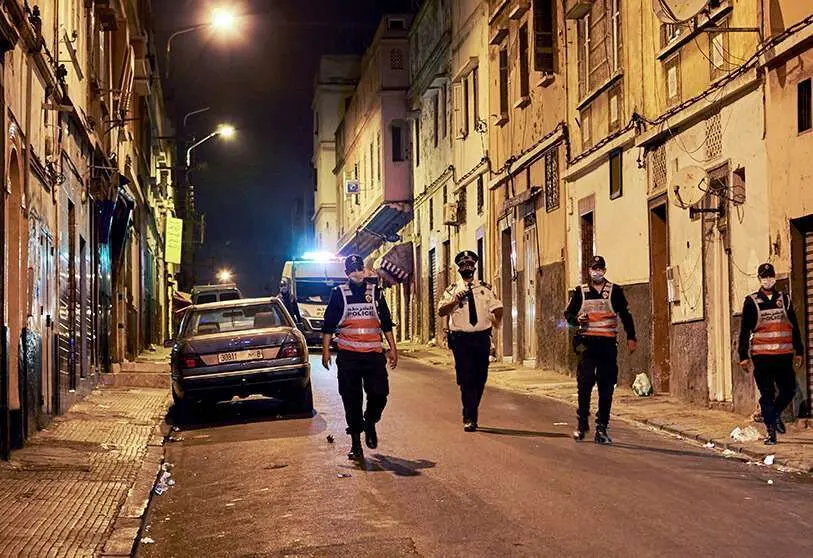Marruecos no descarta un nuevo confinamiento

At a time when European countries are suffering from a new wave of contagion, the question of a new confinement is once again being raised in Morocco. The head of government, Saad Eddine El Othmani, was replying to a question on Tuesday in a parliamentary session about a possible confinement.
Saad Eddine El Othmani said that the Kingdom, like other countries in the world, is experiencing a continued spread of the VICD-19 pandemic, noting that this situation has led Morocco to extend the state of health emergency six times in a row. "The numbers force us to do this. Internationally, countries are suffering more than in the first wave. This has led some countries to announce a new confinement. This affects the economy on a global scale. At the national level, we have taken the necessary measures since the beginning of the crisis to avoid the worst," said El Othmani.
He further noted that the efforts of all actors should be directed, firstly, to combating the spread of the pandemic, secondly, to the recovery of economic activity and addressing the socio-economic impact of the COVID-19.
In addition, he stressed that seasonal diseases weaken immunity and present symptoms similar to those of COVID-19, which, he said, posed an additional challenge in dealing with the spread of the pandemic.
To this end, the government official called on citizens and institutions to exercise vigilance and precaution, respecting individual and collective health measures. However, it should not be forgotten that the state of emergency, which has just been extended by the Government, remains in force. It allows governors to decide, among other things, to reinforce or lighten security measures in line with the evolution of the pandemic.

Mr Othmani did not fail to highlight the worrying epidemiological situation in the Casablanca-Settat region, pointing out that the region alone is responsible for almost half of the confirmed cases and deaths.
According to data as of September 20, 2020, the number of active cases continues to fluctuate around 20,000, but the number of deaths per day has increased at a rate of 30 to 40 cases per day since the end of July, reflecting a persistent increase in the spread of infection among vulnerable people, according to a report issued by the HCP in its latest publication entitled 'AIDS Epidemic Status-19 and Development Prospects in Morocco for the End of 2020'.
As regards hospitalisation and resuscitation bed rates, they stood at 33.7% and 4% respectively at the beginning of May 2020, which still coincides with the continued implementation of generalised containment measures, reports the HCP, noting that following the breakthrough, strong pressure was being put on the health system, with a rapid increase in hospitalised cases.
The number of coronavirus infections has risen sharply in the post-reporting period. The rate of infection accelerated during August, with a 157% increase in the number of cases compared to the first five months of the epidemic. Given this development, and assuming that the proportion of asymptomatic cases remains at the level of 75% of all infected cases and that bed capacity remains unchanged, the national health system will be in a "state of saturation" if the number of active cases exceeds 31,000.

However, according to the latest figures announced by the Ministry of Health, as of 1 November, the number of active cases currently stands at more than 34,400, while the occupancy rate of intensive care beds dedicated to COVID-19 is 36.4%. Furthermore, according to the HCP, the evolution of the current situation could lead to a number of infections of more than 475,000 cases by the end of the year, compared to just over 222,500 at present.
The head of government referred to some indicators relating to the epidemiological situation in the Kingdom, stating that the seriousness of the epidemiological situation in Morocco is measured by the number of serious cases, deaths and infections.
Morocco still has one of the lowest case fatality rates in the world at 1.7%, he continued, adding that the occupancy rate of intensive care beds dedicated to COVID-19 is around 36%.
Selective restrictions are currently being imposed in certain regions and cities to contain the high number of pollutants, he recalled, insisting on a "purely Moroccan approach to decision-making, based on real data collected on the ground and which has proved its effectiveness".







